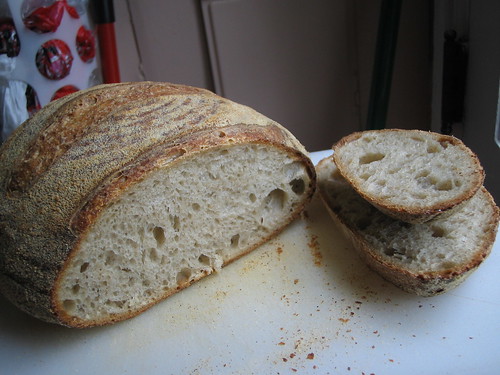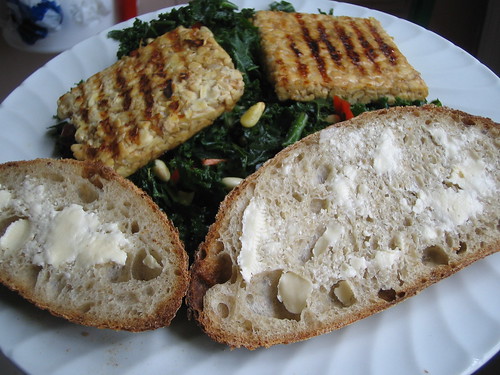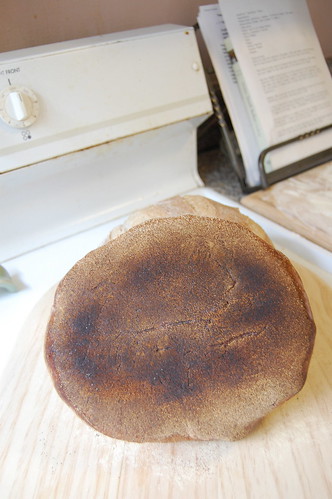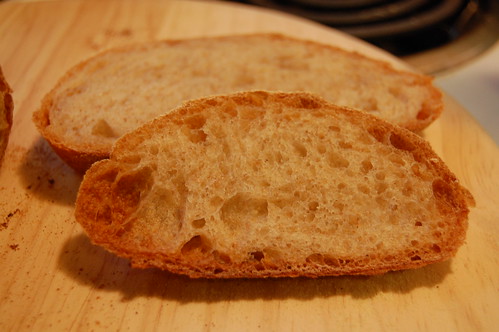There was much more to baking day last Saturday than the Rustic Bread. It was time to jump back into sourdough. My first attempt was using my own starter which I ignored and then finally threw out because the smell freaked me out. I probably could have just fed it a lot and kept it going, but ended up ordering some starter from Northwest Sourdough instead. Also, I didn’t take into account my crappy oven so ended up with a pale top and almost burnt bottom. Hey, that’s what practice is for, right? Oh yeah, and my 2nd attempt was rising in the oven when I forgot it was there and preheated the oven. D’oh!
So, this time, I decided to make the same recipe, the Vermont Sourdough from Jeffrey Hamelman’s Bread using two different starters, Australian and Danish Rye. Just to see the difference and as an excuse to make even more bread. I mean, if you’re gonna heat up the oven for 4 loaves, might as well make it 6!
The difference between the two was subtle. In the end, I think the Australian wasn’t quite as sour. The rise and crumb seemed to be about the same. These are the loaves with the Rye starter, but the other looked about the same:
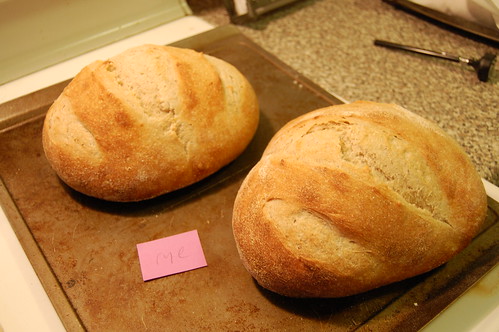
Here is the crumb from the Rye starter:
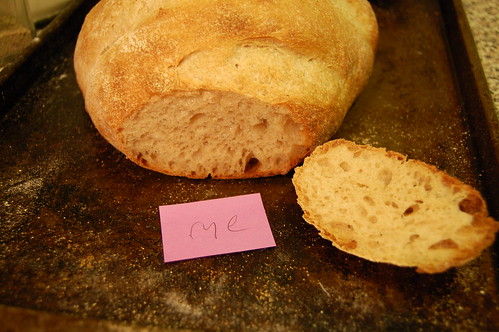
The crumb of the Australian starter. As you can see, I fear my oven going crazy and shooting up in temperature and burning my breads, so I have a habit of taking them out as soon as the internal temperature reaches 205-210 degrees F.
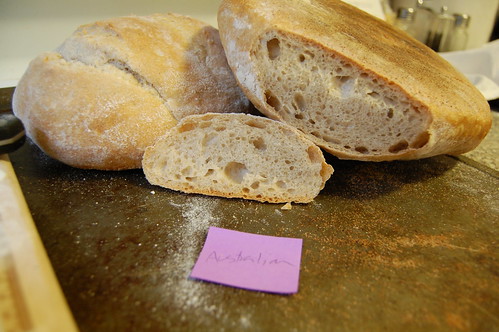
And here is a slice of each side by side. The Australian wasn’t actually flatter than the Rye, I was just further into the Rye loaf when these were cut.
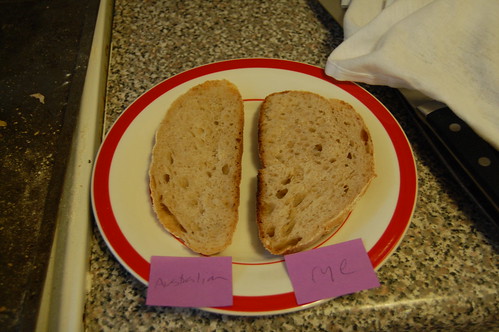
All in all I was really happy with both. Obviously there’s lots of room for improvement, but I think I’m doing pretty well for someone that has no idea what she’s doing. 🙂
How did I use all this bread? Gave a bunch away, of course. Ate it sliced with Earth Balance. Sliced with peanut butter. Toasted with EB alongside Lentil and Pastina Soup. Made French Toast with it and had with tofu scramble and obligatory green vegetable, broccoli. And had this morning toasted with EB and pomegranate jelly and with leftover scramble.
Coming soon, experiments in laminated dough, or, OMG I’m covered in Earth Balance. Ewww!
